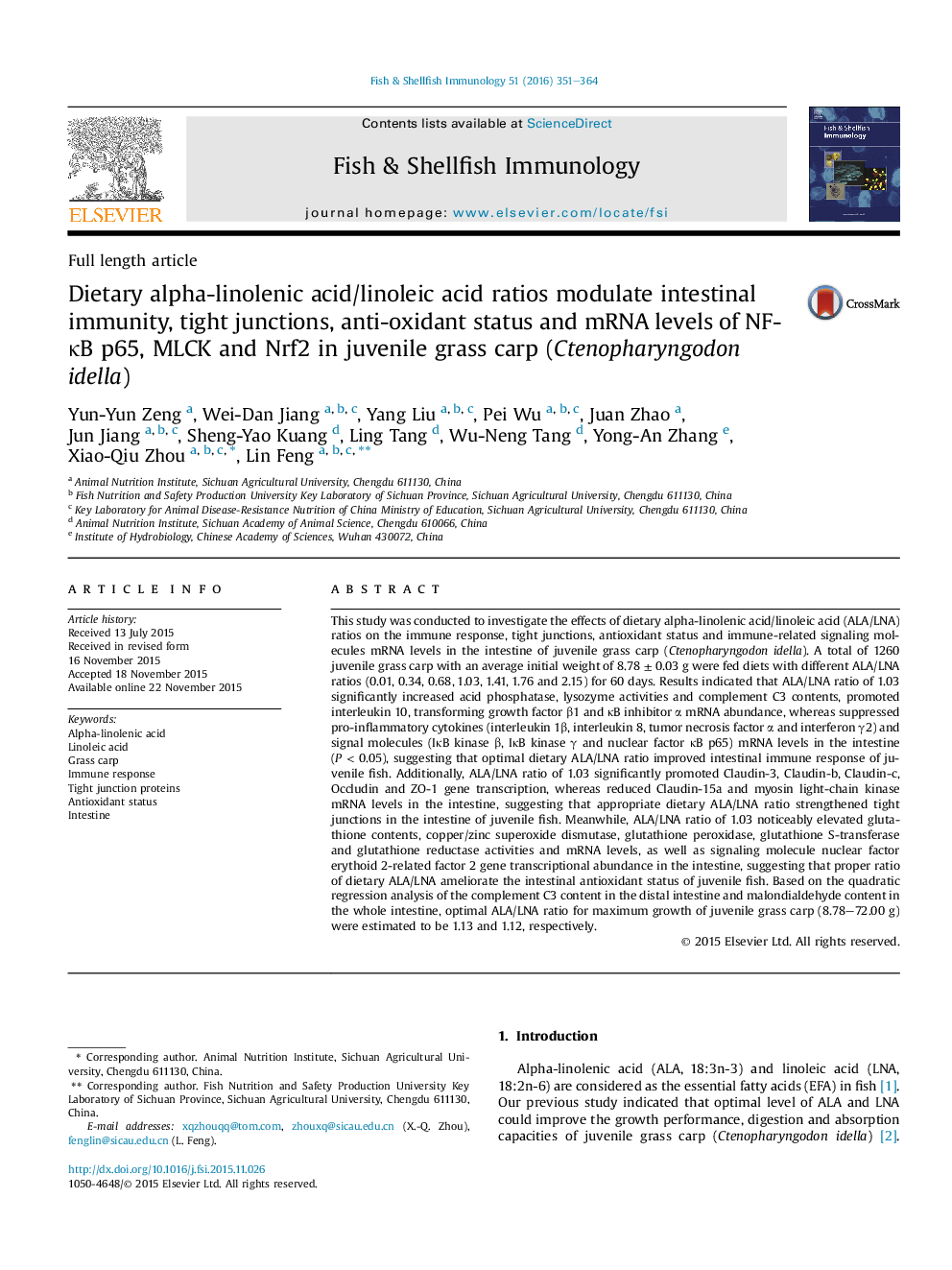| Article ID | Journal | Published Year | Pages | File Type |
|---|---|---|---|---|
| 2430741 | Fish & Shellfish Immunology | 2016 | 14 Pages |
•Optimal ALA/LNA ratio improved immune response in the intestine.•Optimal ALA/LNA ratio strengthened intestinal tight junctions.•Optimal ALA/LNA ratio ameliorated intestinal antioxidant capacity.•Optimal ALA/LNA ratio regulated NF-κB, MLCK and Nrf2 signaling pathways.
This study was conducted to investigate the effects of dietary alpha-linolenic acid/linoleic acid (ALA/LNA) ratios on the immune response, tight junctions, antioxidant status and immune-related signaling molecules mRNA levels in the intestine of juvenile grass carp (Ctenopharyngodon idella). A total of 1260 juvenile grass carp with an average initial weight of 8.78 ± 0.03 g were fed diets with different ALA/LNA ratios (0.01, 0.34, 0.68, 1.03, 1.41, 1.76 and 2.15) for 60 days. Results indicated that ALA/LNA ratio of 1.03 significantly increased acid phosphatase, lysozyme activities and complement C3 contents, promoted interleukin 10, transforming growth factor β1 and κB inhibitor α mRNA abundance, whereas suppressed pro-inflammatory cytokines (interleukin 1β, interleukin 8, tumor necrosis factor α and interferon γ2) and signal molecules (IκB kinase β, IκB kinase γ and nuclear factor κB p65) mRNA levels in the intestine (P < 0.05), suggesting that optimal dietary ALA/LNA ratio improved intestinal immune response of juvenile fish. Additionally, ALA/LNA ratio of 1.03 significantly promoted Claudin-3, Claudin-b, Claudin-c, Occludin and ZO-1 gene transcription, whereas reduced Claudin-15a and myosin light-chain kinase mRNA levels in the intestine, suggesting that appropriate dietary ALA/LNA ratio strengthened tight junctions in the intestine of juvenile fish. Meanwhile, ALA/LNA ratio of 1.03 noticeably elevated glutathione contents, copper/zinc superoxide dismutase, glutathione peroxidase, glutathione S-transferase and glutathione reductase activities and mRNA levels, as well as signaling molecule nuclear factor erythoid 2-related factor 2 gene transcriptional abundance in the intestine, suggesting that proper ratio of dietary ALA/LNA ameliorate the intestinal antioxidant status of juvenile fish. Based on the quadratic regression analysis of the complement C3 content in the distal intestine and malondialdehyde content in the whole intestine, optimal ALA/LNA ratio for maximum growth of juvenile grass carp (8.78–72.00 g) were estimated to be 1.13 and 1.12, respectively.
